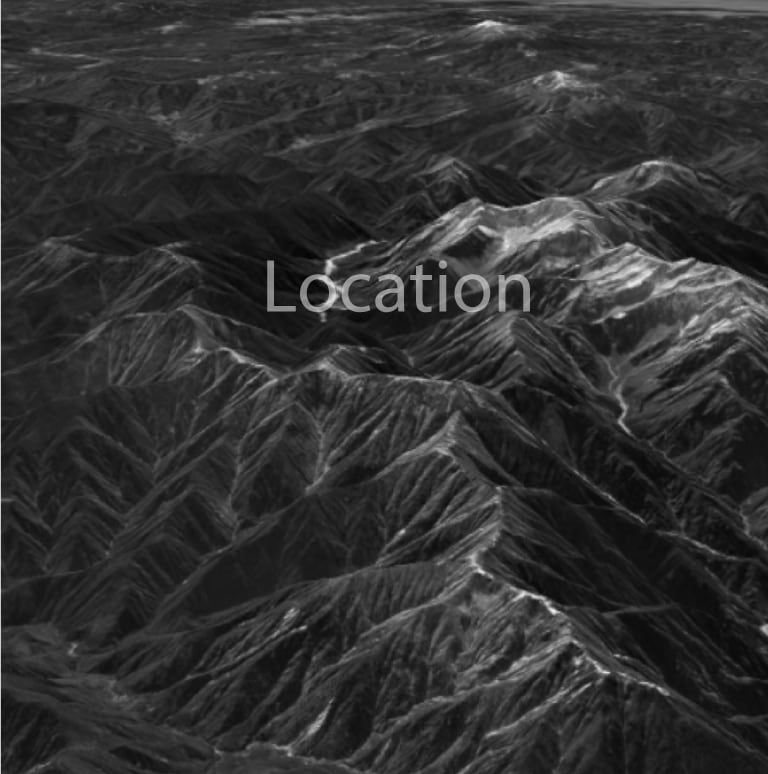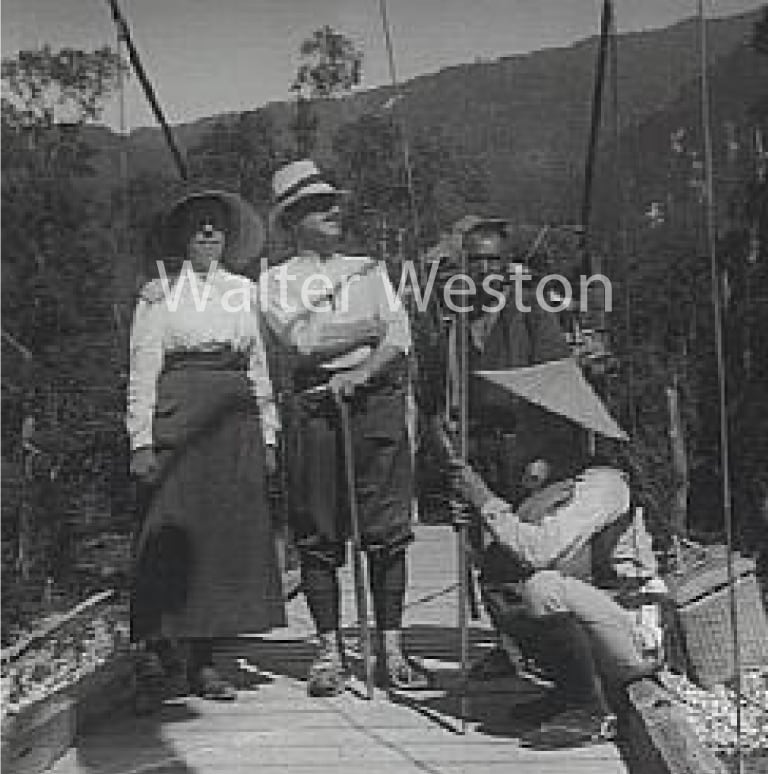
Northern Area of The Northern Alps
In the area where Toyama, Niigata & Nagano prefectures overlap can be mainly found the Tateyama mountain range & the rear Tateyama mountain range.
Known as well as an area of heavy snowfall, there are 6 confirmed glaciers in existence here today. Beginning with Mt. Tsurugi-dake & Kurobe Gorge, the snow and ice created the glacial conditions which fashioned these steep mountains and valleys which can be said to be the unique mountain environment representative of The Japan Alps.
<Tateyama Mountain Range>
This is the mountain range which extends from Mt. Souga-dake, located mostly in the north to Mt. Mitsumata-renge-dake, via Mt. Tsurugi-dake, The Tateyama Mountains, Mt. Yakushi-dake & Mt. Kurobe-goro-dake.
【The 100 Famous Mountains of Japan】
Tsurugi-dake(2,999 m)、the Tateyama Mountains(3,015 m)、Mt. Yakushi-dake(2,926 m)、Mt. Kurobe-goro-dake(2,840 m)
【Japan 200 Famous Mountains】
Kekachi-yama(2,414 m)、Oku-dainichi-dake(2,611 m)
【Japan 300 Famous Mountains】
Mt. Kuwasaki-yama(2,090 m)
<Rear Tateyama Mountain Range>
This is the mountain range which extends from Oyashirazu, which faces The Japan Sea to Mt. Rengedake, via Mt. Shiroumadake, Mt. Goryudake & Mt. Kashima-yarigatake. In the Edo period (1603-1868), the historical naming was “rear mountain” which referenced the Tateyama mountain range position behind the Toyama prefectural area where the Kaga Han was the local government.
【Japan 100 Famous Mountains】
Mt. Shirouma-dake(2,932 m)、Mt. Goryu-dake(2,814 m)、Mt. Kashima-yari-gatake(2,889 m)
【Japan 200 Famous Mountains】
Mt. Yukikura-dake(2,610 m)、Mt. Harinoki-dake(2,820 m)
【Japan 300 Famous Mountains】
Mt. Asahi-dake(2,418 m)、Mt. Karamatu-dake(2,696 m)、Mt. Ji-gatake(2,669 m)、Mt. Renge-dake(2,798 m)
Southern Area of The Northern Alps
Mainly the mountain area where Gifu & Nagano prefectures overlap – here a mountain range radiates in every direction from Mt. Yarigatake – this range can be said to be the landmark of The Northern Alps.
From Kamikochi, the front gate of The Northern Alps and Karasawa corrie, the magnificent Hodaka range may be beheld.
Here there are many routes that are popular among mountain climbers such as the Omote Ginza traverse route known as the panorama route of The Northern Alps and recently the Nishi Ginza Diamond route, the traverse route in the direction of Mt. Kurobe-goro-dake to Mt. Yari-gatake.
【The 100 Famous Mountains of Japan】
Mt. Suisho-dake(2,986 m)、Mt. Washiba-dake(2,924 m)、Mt. Kasa-gatake(2,897 m)、Mt. Yari-gatake(3,180 m)、Mt. Jonen-dake(2,857 m)、Hotaka Mountains(3,190 m)、Mt. Yake-dake(2,455 m)、Norikura-dake Mountains(3,025 m)
【The 200 Famous Mountains of Japan】
Mt. Gaki-dake(2,647 m)、Mt. Ariake-yama(2,268 m)、Mt. Tsubakuro-dake(2,762 m)、Mt. Otensho-dake(2,921 m)、Mt. Kasumi-sawa-dake2,645 m)、Mt. Akaushi-dake(2,864 m)Mt. Ebosi-dake(2,628 m)
【The 300 Famous Mountains of Japan】
Mt. Noguchi-goro-dake(2,924 m)、Mt. Mitsumata-renge-dake(2,841 m)、Mt. Hachi-mori-yama(2,447 m)
The Central Alps
& Ontake Mountains
This mountain range in south Nagano and east Gifu prefectures, is a lower and narrower mountain range compared with the Northern and Southern Alps.
It includes Mt. Kyogatake located at the northernmost point to Mt. Okawa-iriyama in the south; the highest peak in this range is Mt. Kisokoma-gatake (2,955 m).
Komagane city is located on the east side of this mountain range. From here a ropeway goes up to Senjojiki (2,611 m), permitting even beginners to climb Mt. Kisokoma-gatake.
Ontake Mountains, one of Japan‘s famous sacred mountains, will be introduced in this section.
【The 100 Famous Mountains of Japan】
Mt. Kisokoma-gatake(2,955 m)、Mt. Utsugi-dake(2,863 m)、Mt. Ena-san(2,191 m)、Ontake-san Mountains(3,067 m)
【The 200 Famous Mountains of Japan】
Mt. Kyo-gatake(2,296 m)、Mt. Minami-koma-gatake(2,841 m)、Mt. Anpeiji-yama(2,363 m)、Mt. Kohide-yama(1,982 m)
【The 300 Famous Mountains of Japan】
Mt. Kosumo-yama(2,613 m)、Mt. Nagiso-dake(1,679 m)、Mt. Oku-sannkai-dake(1,811 m)
The Southern Alps
In the vast mountain area 120km from north to south where Nagano, Yamanashi & Shizuoka prefectures overlap can be mainly found the northern range including Kaikoma-gatake, eastern range including the Shira-mine mountains and the western range including Akaishi-dake, Hijiri-dake where is southernmost 3,000 m peak in Japan at the south part of The Southern Alps.
The Southern Alps is at an elevation which is above the tree line of the Northern Alps; furthermore its forest is deeper than that of the Northern Alps.
Be sure to schedule ample time in your climbing plan as it takes a good deal of time just to reach the entry gate for climbing.
【The 100 Famous Mountains of Japan】
Kaikoma-gatake(2,967 m), Houo mountains(Kan-non-dake 2,840 m)
<Eastern range>
Mt. Kita-dake(3,193 m)、Mt. Aino-dake(3,190 m)
<Western range>
Mt. Senjyo-gatake(3,033 m)、Mt. Shiomi-dake(3,052 m)、Mt. Warusawa-dake /Arakawa-higashi-dake(3,141 m)、Mt. Akaishi-dake(3,120 m)、Mt. Hijiri-dake(3,013 m)、Mt. Tekari-dake(2,591 m)
【The 200 Famous Mountains of Japan】
<Northern range>
Mt. Nokogiri-dake(2,685 m)Mt. Kushigata-yama(2,052 m)
<Eastern range>
Mt. Notori-dake(3,025 m)、Mt. Zaru-gatake(2,629 m)
<Western range>
Mt. Kamikochi-dake(2,803 m)、Mt. Ikeguchi-dake(2,392 m)、Mt. Dai-mugen-dake(2,329 m)
【The 300 Famous Mountains of Japan】
<Northern range>
Mt. Asayo-mine(2,799 m)
<Western range>
Mt. Chausu-dake(2,604 m),Mt. Oku-Chausu-yama(2,474 m)
Yatsu-gatake, Kiri-gamine
& Utsukushi-gahara
On the opposite side of the Northern Alps, Matsumoto Basin and Lake Suwa, lies a comparably moderate mountain range which includes Yatsu-gadake, Kiri-gamine and Utsukushi-gahara.
Reaching the gate of any of these mountains is easy in terms of approach time and route.
For starters, facilities such as the ONSEN are complete and the climbing environment has been carefully developed to include beginners.
【The 100 Famous Mountains of Japan】
Yatsu-gatake Mountains (Mt. Aka-dake: 2,899 m)、Mt. Tateshina-yama(2,530 m)、Kiri-gamine Mountains Plateau (Mt. Kuruma-yama: 1,925 m)、Utsukushi-gahara Plateau(Mt. Ou-gato: 2,034 m)
【The 200 Famous Mountains of Japan】
Mt. Tengu-dake(2,646 m)



